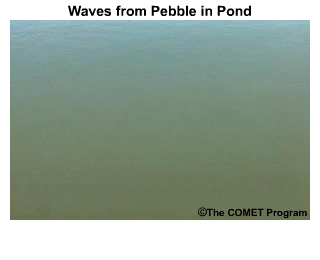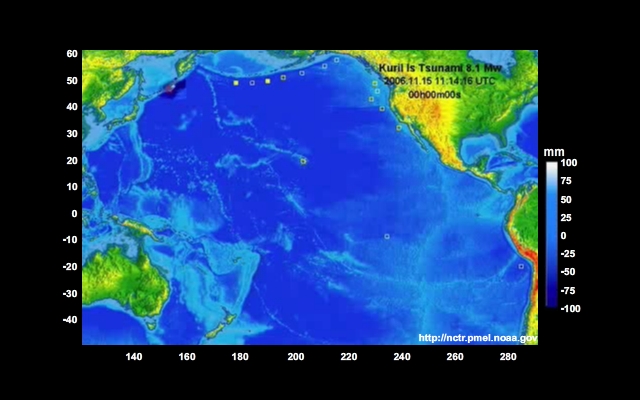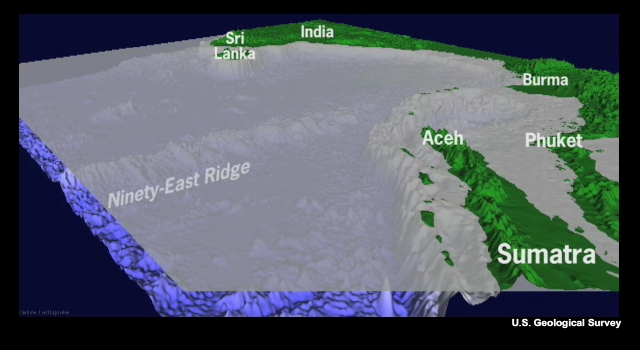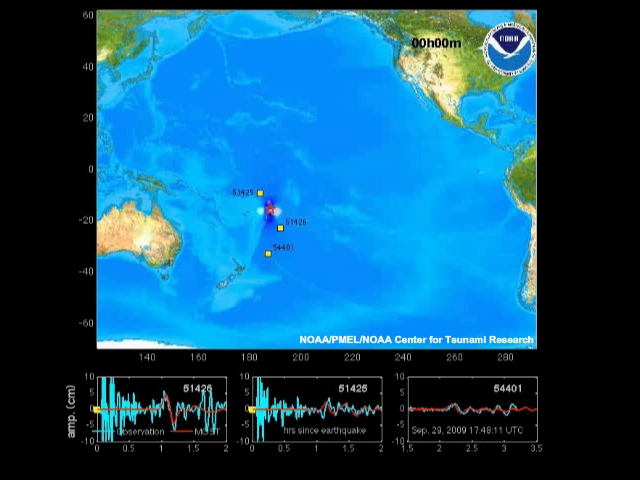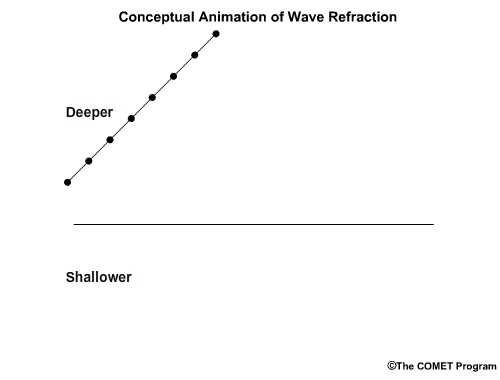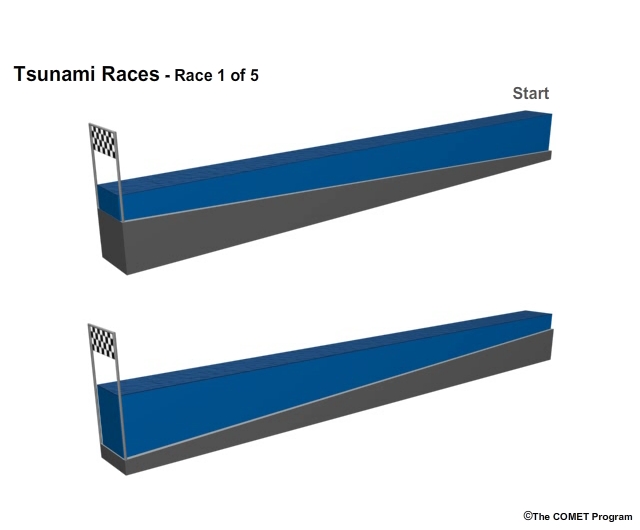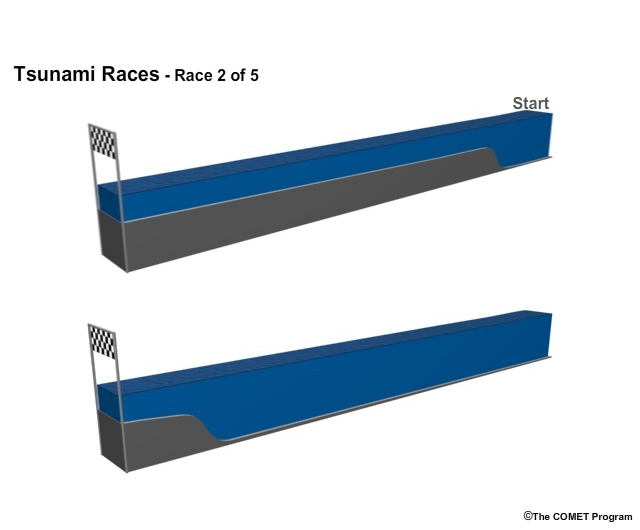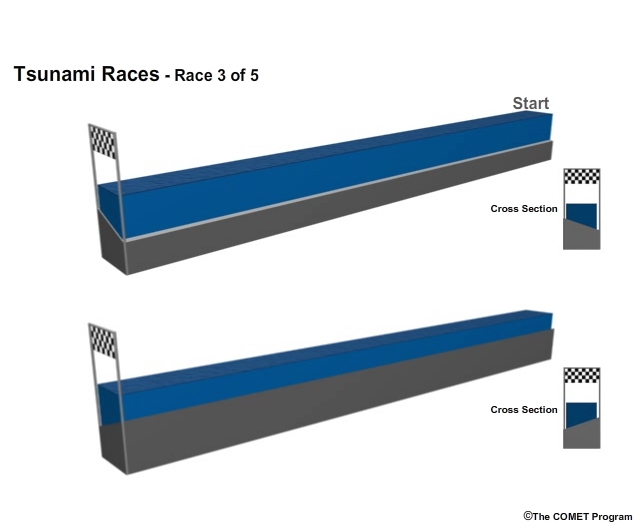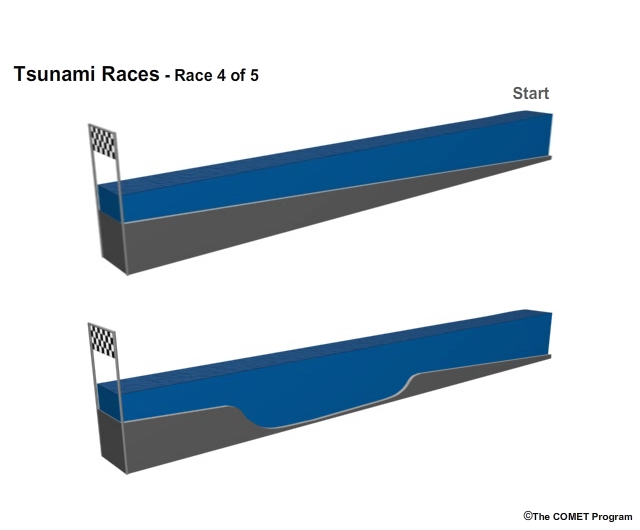Produced by The COMET® Program
Reflection
When tsunamis travel, they don't do so evenly like the ripples ringing a pebble tossed into a pond. For one thing, earthquakes that trigger tsunamis aren't rounded like pebbles.

They occur along faults that are often unevenly shaped or oblong, and the fault ruptures can be hundreds of kilometers long.
Also, the ocean is a much bigger and more complicated place than a pond.
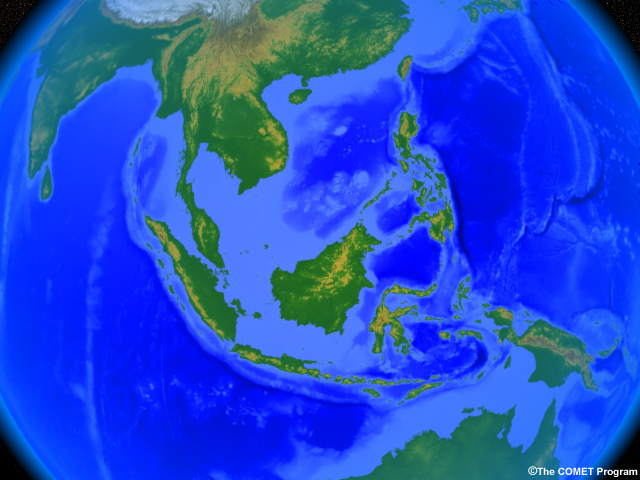
Over the distances tsunamis travel, the seafloor is uneven. And the basin is filled with obstacles that can steer, disrupt, speed up, or slow waves. These obstacles matter because a tsunami wave extends all the way to the ocean bottom.
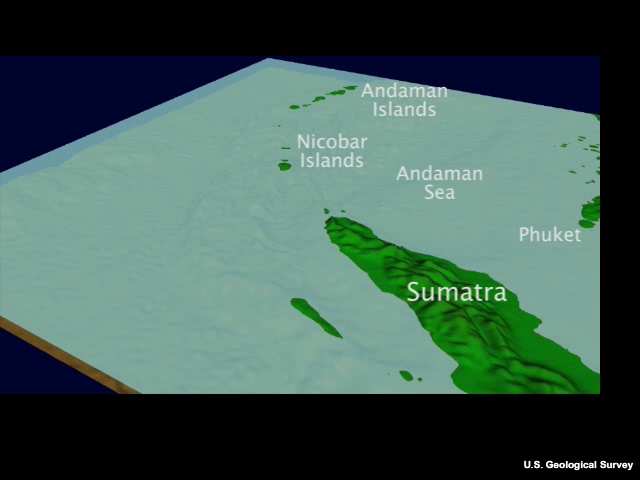
Animation of changes in sea level heights resulting from the December 2004 long-rupture earthquake off the coast of Sumatra.
Once in motion, a water wave can flow above, bounce off, or bend around terrain such as ridges, sea mounts, and coastlines.
Question
What do you think will happen when a tsunami wave runs into a long underwater ridge? (Choose the best answer.)
The correct answer is c).
If you thought the best answer was that the wave both bounces off and goes over the top, you're right. The bottom part of the wave will smack into the ridge and bounce off of it, while the top part of the wave moves over it. If the wave runs into an obstacle that extends above the ocean surface, like a very large island or the coast of a continent, some water will rush up onto shore, but some will also bounce off the island or continent edge.
This "bouncing off" is referred to as reflection.You can see that happening in this movie of a tsunami generated in the Kuril Islands of northeast Russia. The tsunami both bounces off and travels over the underwater Emperor Seamounts and Hawaiian Ridge.
The steep surfaces of the Maldives and Sri Lanka in the central Indian Ocean also make excellent reflectors, as you can see in this movie.
Here is another example—the 2009 Samoan Tsunami. Notice the many reflections off Pacific islands and off the coast of California.
Refraction
Question
What do you think will happen when a tsunami moves over an uneven sea floor, where part of the wave travels into shallow water but the other part moves in water that stays deeper? (Choose all that apply.)
The correct answers are c) and e).
If you thought the tsunami will both turn toward the shallow water and slow down, you're right.
This "bending" or turning toward shallow water is called wave refraction. Refraction is the change in the direction of wave movement due to a change in wave speed. Waves slow down in shallow water.
So when only one part of a wave is in shallow water, the wave bends.
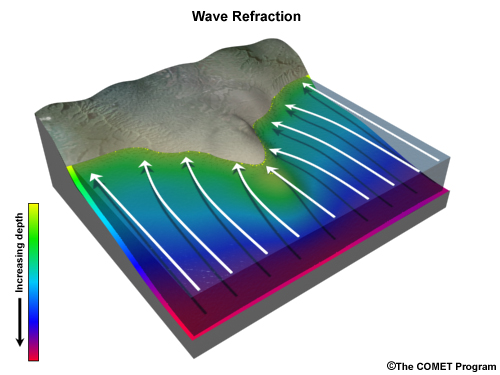
For example, in this illustration of a wave passing by a spit of land as it nears the coast, you can see that the wave turns toward the peninsula. At the tip of the peninsula, the wave enters shallower water and slows down, but the sections in deeper water continue speeding ahead, bending the wave toward the peninsula.
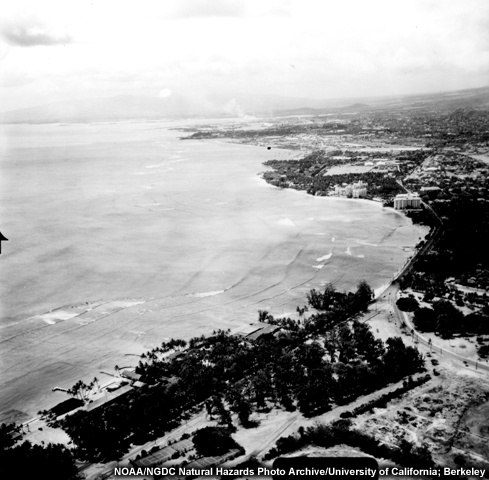
Here is a photo of real refraction of wind waves off Waikiki Beach in 1946.
Refraction can create some very interesting effects—like channeling.
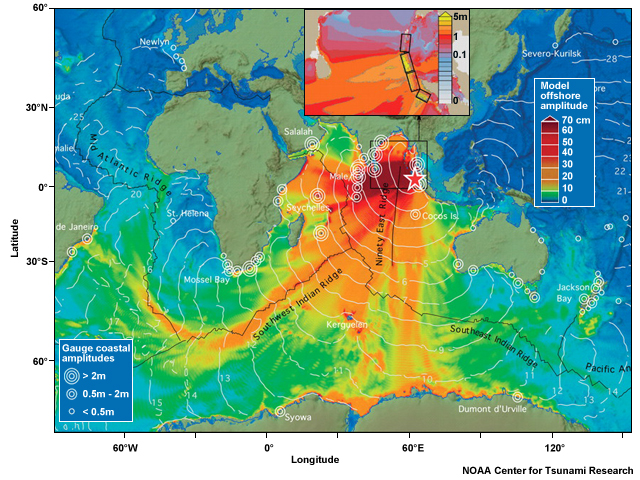
In this computer model of the Indian Ocean tsunami, areas with the largest waves are shown with colors like red and orange. You can see how mid-ocean ridges seem to funnel tsunami waves down their length. This is a refraction effect. Along a mid-ocean ridge, the speed will decrease because the sea is shallower compared to the areas surrounding the ridge. Tsunami waves on both sides of the ridge will bend toward this shallower area, bunching up or channeling along the ridge.
Tsunami Races
Now that you know about reflection, refraction, and channeling, let's go to the tsunami races and choose the winners!
For each of the following pairs, guess which tsunami you think will win the race, based on the seafloor it travels over.
Summary
Tsunamis travel unevenly across oceans due to the irregular shapes of their sources and the obstacles they encounter while moving across ocean basins.
Tsunami waves reflect off of undersea ridges, sea mounts, continental shelves, and other large obstacles they encounter. If the obstacles are submarine, a portion of the wave also travels over them.
Waves slow down in shallow water. As a result, when the depth is uneven where a wave is traveling, it will seem to turn, or refract, toward the shallower water.
Refraction can bend waves toward shallower water above undersea ridges, funneling the waves along their lengths.
Click here to return to the 4.5 Hours Page.
